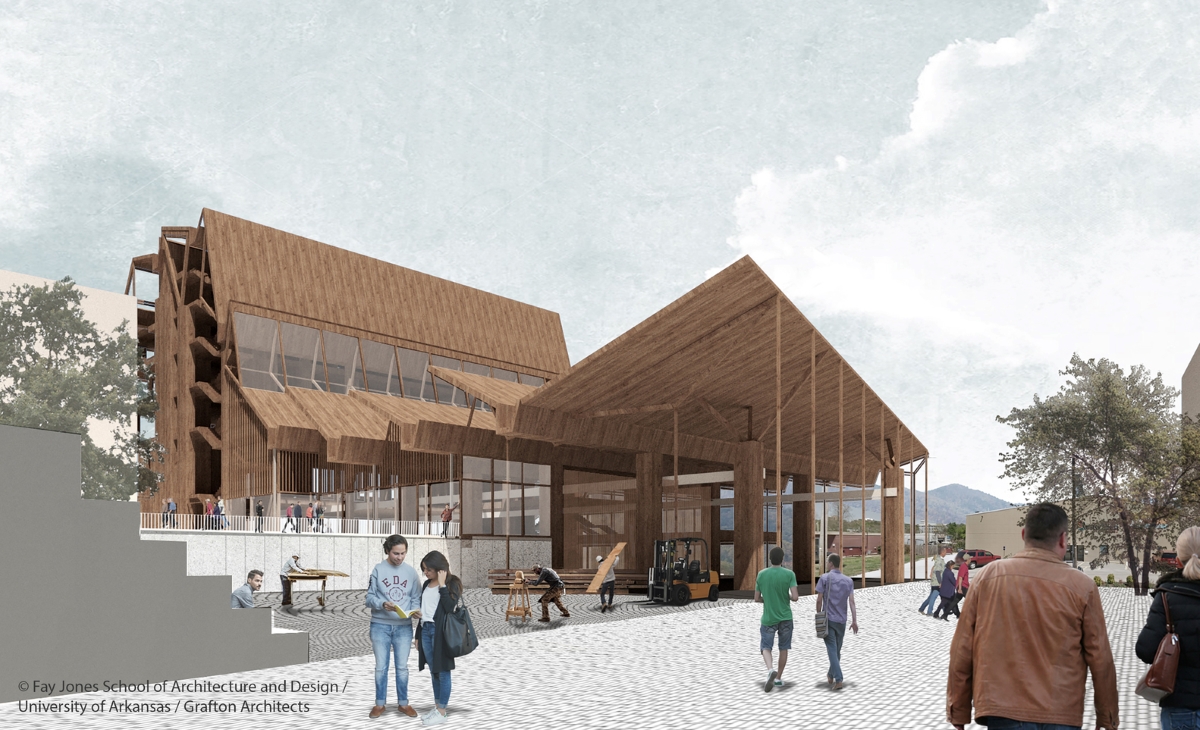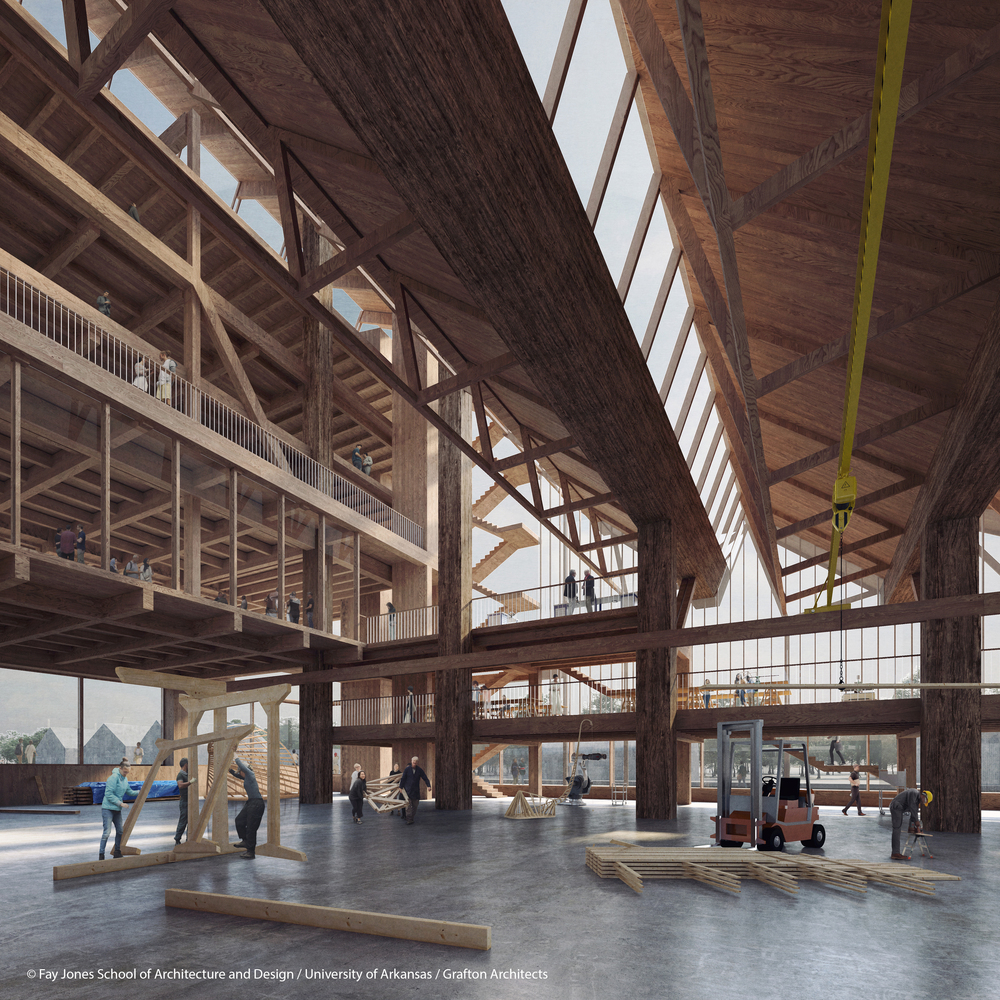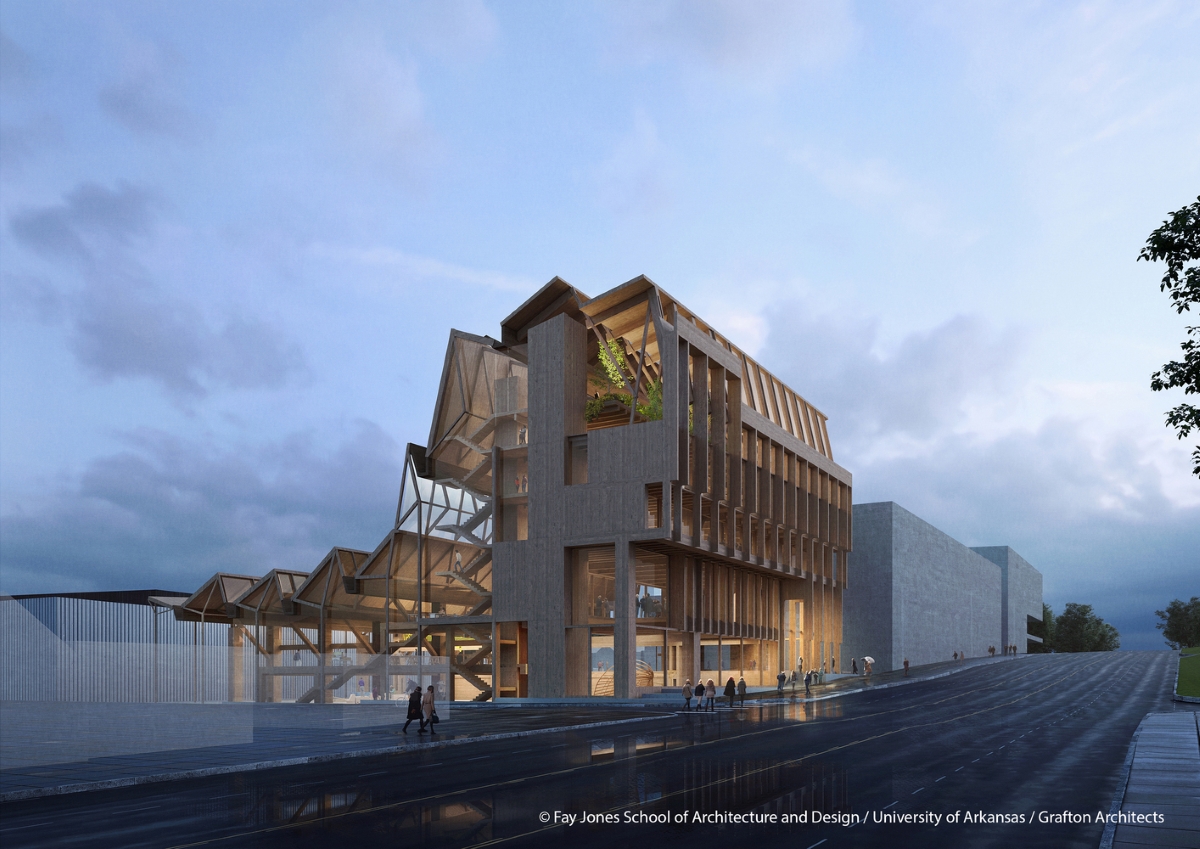Nestled in the heart of Fayetteville, Arkansas, the University of Arkansas’ Anthony Timberlands Centre for Design and Materials Innovation stands as a beacon of forward-thinking architecture and sustainable practices. This cutting-edge facility, part of the Fay Jones School of Architecture and Design, is not only a testament to the region’s rich timber heritage but also a symbol of the university’s commitment to environmental stewardship and technological advancement.
A Tribute to Timber
The Anthony Timberlands Centre, named after the prominent Arkansas timber company Anthony Timberlands Inc., serves as an advanced research hub focused on timber and wood-based materials. The centre’s mission is to explore and innovate in the fields of sustainable architecture and construction. This includes studying the properties of timber, developing new wood products, and promoting the use of timber in construction as an eco-friendly alternative to traditional building materials.

Arkansas’ long history with the timber industry makes it an ideal location for such a centre. The state’s abundant forests provide a natural laboratory for research and development. By leveraging this local resource, the centre aims to lead the way in creating sustainable building practices that can be adopted globally.
The design of the Anthony Timberlands Centre itself is a masterpiece of sustainable architecture. The building, which is set to be completed in the coming years, will be a showcase for the innovative use of timber in construction. The architecture emphasizes the natural beauty and versatility of wood, using it extensively in structural and aesthetic elements. This approach not only reduces the building’s carbon footprint but also creates a warm and inviting environment that celebrates the material’s natural properties.
The centre’s design integrates advanced technologies to enhance energy efficiency and sustainability. Features such as solar panels, rainwater harvesting systems, and green roofs are planned to ensure that the building operates with minimal environmental impact. These elements, combined with the use of locally sourced timber, underscore the university’s dedication to sustainable development.
At its core, the Anthony Timberlands Centre is a place of learning and innovation. It will house state-of-the-art laboratories and research facilities where students, faculty, and industry professionals can collaborate on pioneering projects. The centre’s focus areas include developing new wood products, improving timber construction techniques, and researching the environmental impacts of timber use.
One of the centre’s primary goals is to educate the next generation of architects, engineers, and designers. By providing hands-on experience with cutting-edge technologies and sustainable practices, the centre aims to prepare students for careers in a rapidly evolving field. The integration of real-world applications with academic study ensures that graduates are well-equipped to tackle the challenges of modern construction and environmental conservation.

The Anthony Timberlands Centre is poised to have a significant impact on both the local community and the broader construction industry. By fostering partnerships with local businesses and industry leaders, the centre helps drive economic growth and innovation in the region. The knowledge and technologies developed here are expected to influence building practices worldwide, promoting sustainability and reducing the environmental impact of construction.
The University of Arkansas’ Anthony Timberlands Centre for Design and Materials Innovation is more than just a building; it is a catalyst for change in the way we think about and use timber in construction. Through its focus on sustainability, education, and community engagement, the centre is set to become a leader in the global movement towards more environmentally friendly building practices. As it continues to grow and evolve, the Anthony Timberlands Centre will undoubtedly leave a lasting legacy on both the University of Arkansas and the field of sustainable architecture.

